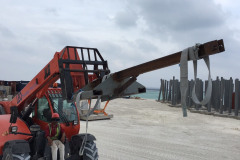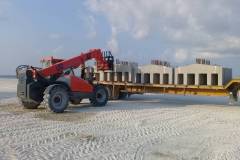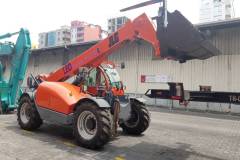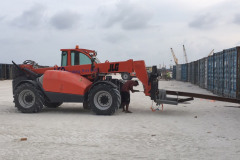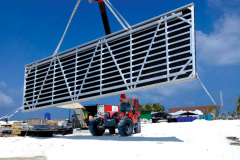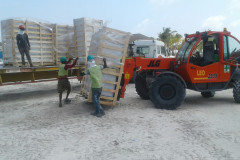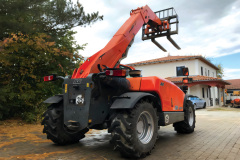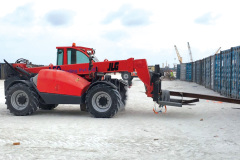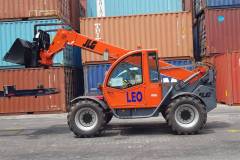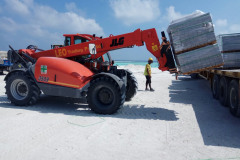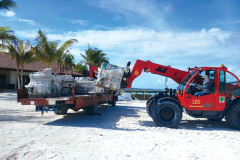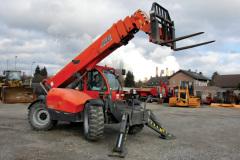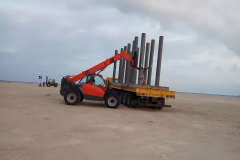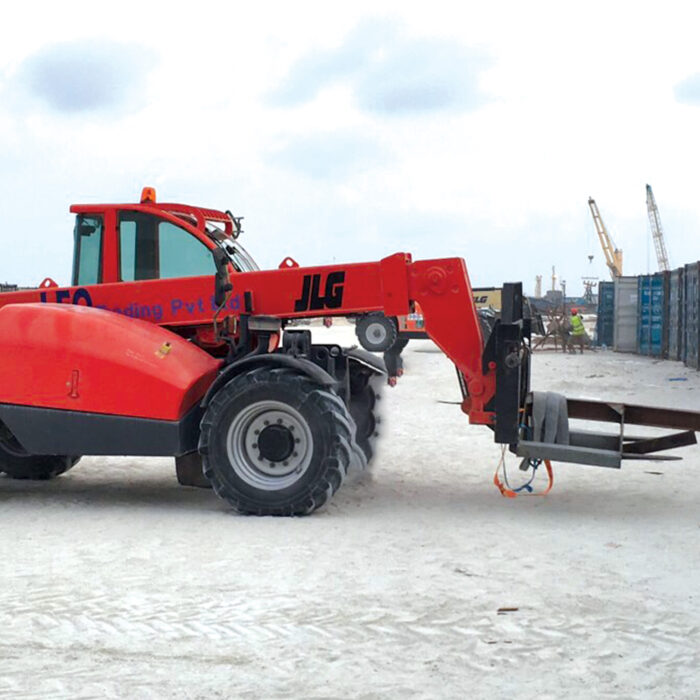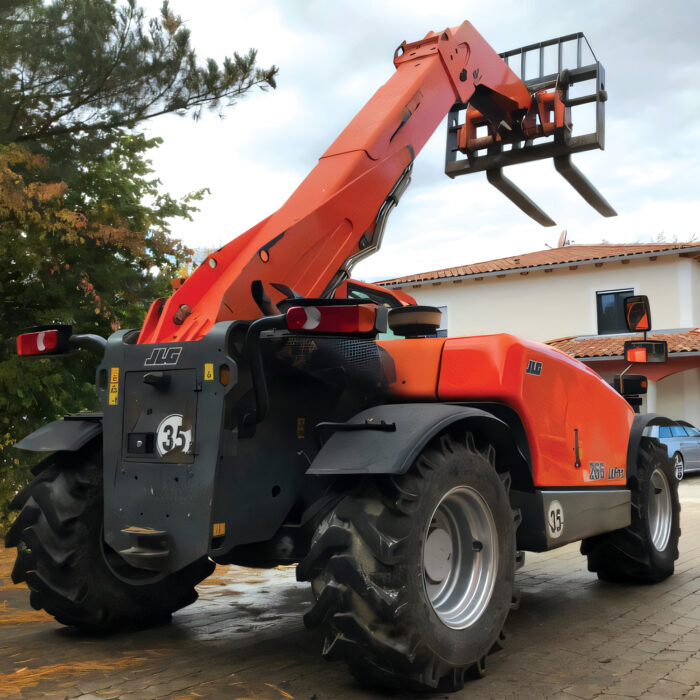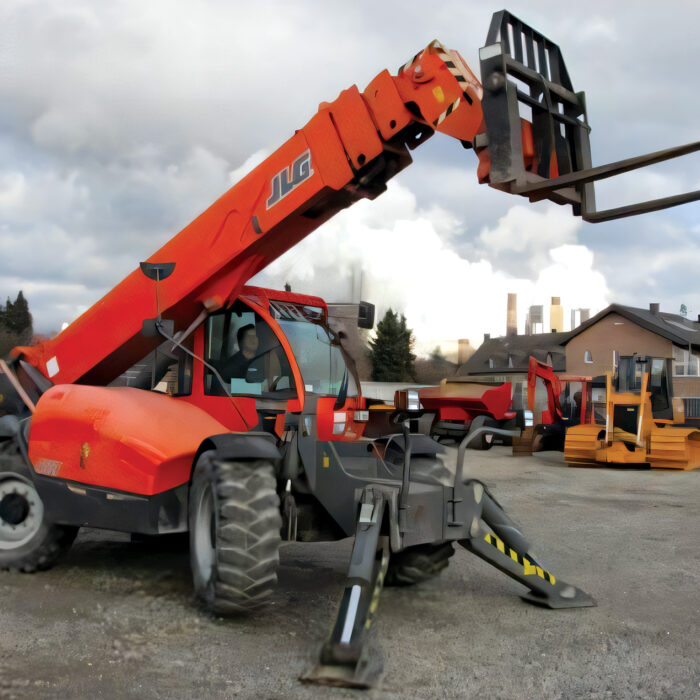

TELESCOPIC FORKLIFT
A telescopic forklift, also known as a telehandler (or telescopic handler), is a type of forklift equipped with a telescoping boom. This boom can extend forward and upward, making it highly versatile and ideal for lifting and placing loads at various heights and distances.
Key Features of a Telescopic Forklift (Telehandler):
- Telescoping Boom: The key feature is the boom that can extend horizontally and vertically. This allows the forklift to reach heights and locations that standard forklifts cannot, such as high shelves or elevated work areas.
- Lifting Capacity: Depending on the model, telescopic forklifts can handle loads between 4,000 and 12,000 pounds (1,800 to 5,400 kg), though larger models can lift even heavier loads.
- Versatility: Telescopic forklifts can be fitted with different attachments, including standard forks, buckets, lifting hooks, and even a personnel platform, allowing it to perform a variety of tasks.
- Four-Wheel Drive (4WD): Many telehandlers come with four-wheel drive, making them effective on rough, uneven terrain, which is common on construction sites or agricultural environments.
- Maneuverability: Many models have a 4-wheel steering system, which enhances their maneuverability, particularly in tight or confined spaces.
- Operator’s Cabin: Operators sit in a fully enclosed cab, providing visibility and control over the lift function. The controls allow operators to raise, extend, retract, and tilt the boom for precise placement of materials.
Energy Type: Diesel
Capacity: 2 – 10 TONS
GALLERY
-
L-233 JLG 3509
Read moreVEHICLE TYPE TELESCOPIC FORKLIFT ENERGY TYPE DIESEL BRAND JLG MODEL 3509 CAPACITY 8.72 T -
L-293 JLG 266
Read moreVEHICLE TYPE TELESCOPIC FORKLIFT ENERGY TYPE DIESEL BRAND JLG MODEL 266 CAPACITY 8 T -
L-355 JLG 4017
Read moreVEHICLE TYPE TELESCOPIC FORKLIFT ENERGY TYPE DIESEL BRAND JLG MODEL 4017 CAPACITY

